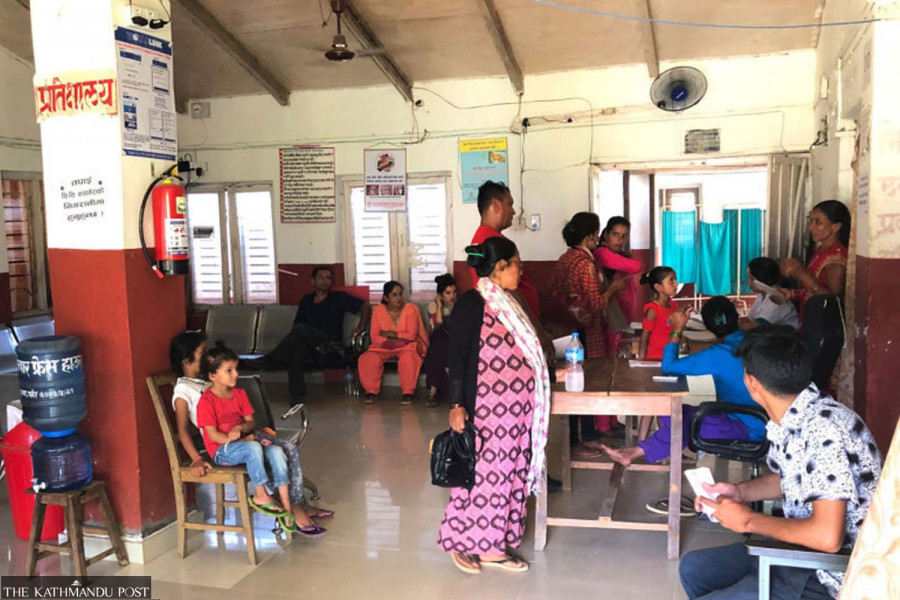Health
Experts team up to trace the source of cholera
At least 76 people from the Valley and adjoining districts test positive in two months. Complacency could make disease endemic, experts say.
Arjun Poudel
In a bid to find the source of the cholera outbreak, the Ministry of Health and Population has decided to carry out a detailed study with the help of experts at the Nepal Health Research Council and scientists at the National Academy of Science and Technology.
The move of the ministry comes amid the outbreak of the deadly disease in several districts including in the districts of Kathmandu Valley.
“Proposal and ethical approval have been passed and we are working to start the study at the earliest,” said Dr Pradip Gyanwali, executive chief at the Council. “We will carry out stool cultures and test water samples of affected areas to find the source of the outbreak.”
Vibrio cholera 01 Ogawa serotype has been confirmed in stool samples of infected patients.
Cholera is a highly infectious disease that causes severe diarrhoea and vomiting, which causes dehydration and can lead to death within a few hours if left untreated. The World Health Organisation says cholera is a global threat to public health and an indicator of inequality and a lack of social development.
So far 76 cases of cholera infection have been confirmed since June 21 and the outbreak of the deadly disease has been reported in almost every area of the Valley. The infection has been also reported in the Valley’s adjoining districts—Nuwakot, Dhading, and Makawanpur.
What concerns public health experts is the source of the infection has not yet been identified.
“Unless a huge number of people die of the disease or are hospitalised at once, authorities concerned in Nepal do not take the problems seriously,” said Dr Krishna Man Shakya, former vice-president of the Nepal Public Health Association.
“Lackadaisical approach of the authorities concerned has been apparent not only in handling Covid cases but in every outbreak.”
Disruption in garbage collection in Kathmandu Valley and increased rainfall has led to contamination in drinking water sources and then to the spread of waterborne diseases like cholera, experts say.
They say identified cases of cholera could be just the tip of the iceberg, as generally only one in 10 people who get infected with cholera develop severe symptoms such as watery diarrhoea and vomiting.
Around 80 to 90 percent of infected people remain asymptomatic and they might not be aware of the infection and could be unwittingly spreading it to others.
“Even after the outbreak of cholera in various places of the Valley, authorities concerned left the garbage piling up on the streets,” Shakya said. “We did not show any urgency.”
Due to poor sanitation and hygiene conditions, Nepal is highly vulnerable to water-borne diseases including diarrhoea, dysentery, typhoid, hepatitis, and cholera, with thousands of people getting infected with them every year.
According to the Health Ministry’s data from the last fiscal year, for every 1,000 children under five years of age, 349 suffered from diarrhoeal diseases.
As the authorities concerned have failed to track down the source of the cholera outbreak, effective intervention measures have not been taken to control the infections.
“We have been urging people to pay attention to the food and water they have been consuming,” said Dr Chuman Lal Das, director at the Epidemiology and Disease Control Division. “As the outbreaks have been reported from various places, we have been unable to locate the source of the infection.”
Without knowing the source, the outbreak cannot be controlled, said Dr Prabhat Adhikari, an infectious disease and critical care expert. “First, the source of the infection should be located, then only we can take intervention measures,” Adhikari said.
The UN health agency says that a multifaceted approach is key to controlling cholera and reducing deaths.
Doctors say launching awareness drives against water-borne diseases and ensuring safe drinking water are the only ways to save people from dying of water-borne diseases, including cholera.
A combination of surveillance, water, sanitation and hygiene, social mobilisation, and treatment is required to contain the spread of the infection, according to doctors.
Last year, too, the deadly disease caused an outbreak in Kapilvastu district. At least six people, including children, died and hundreds others were hospitalised due to the infection.
The Health Ministry launched a mass vaccination drive against the disease after all its attempts to curb the infection failed.
Doctors say with the authorities concerned failing to locate the source of the outbreak and take intervention measures, the risk of cholera becoming an endemic will only grow.




 13.12°C Kathmandu
13.12°C Kathmandu














